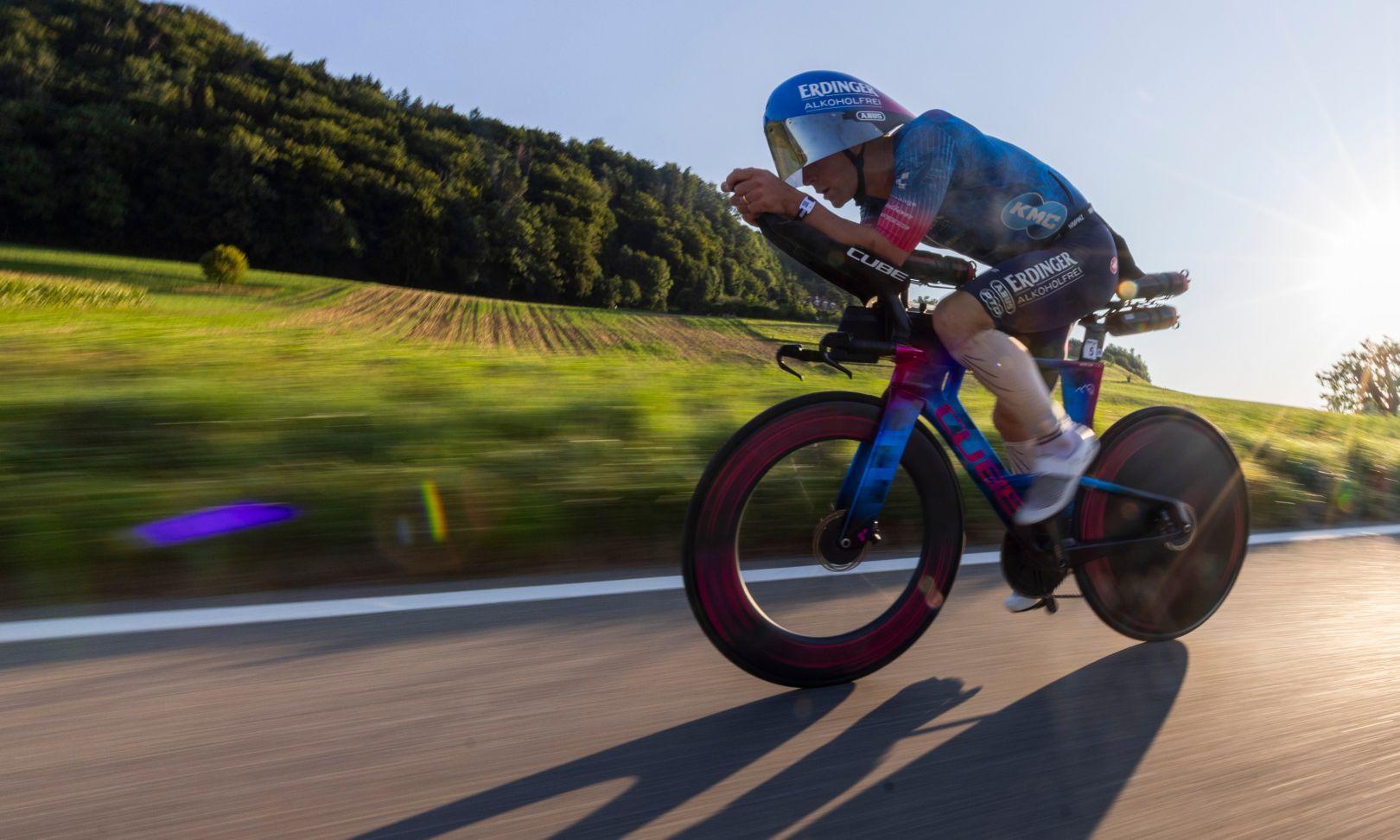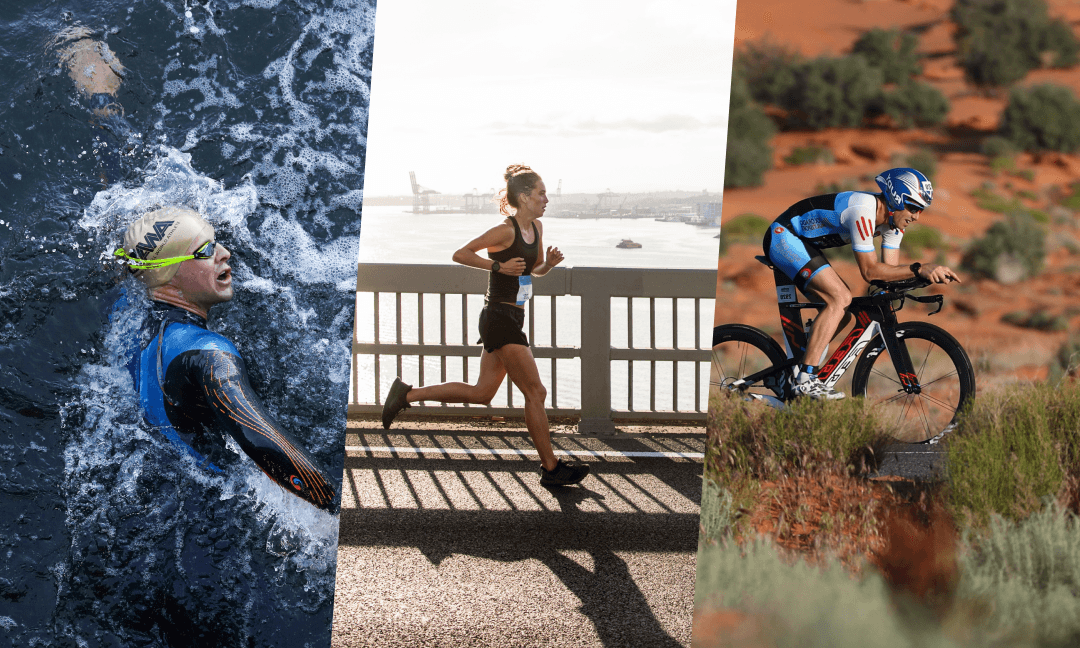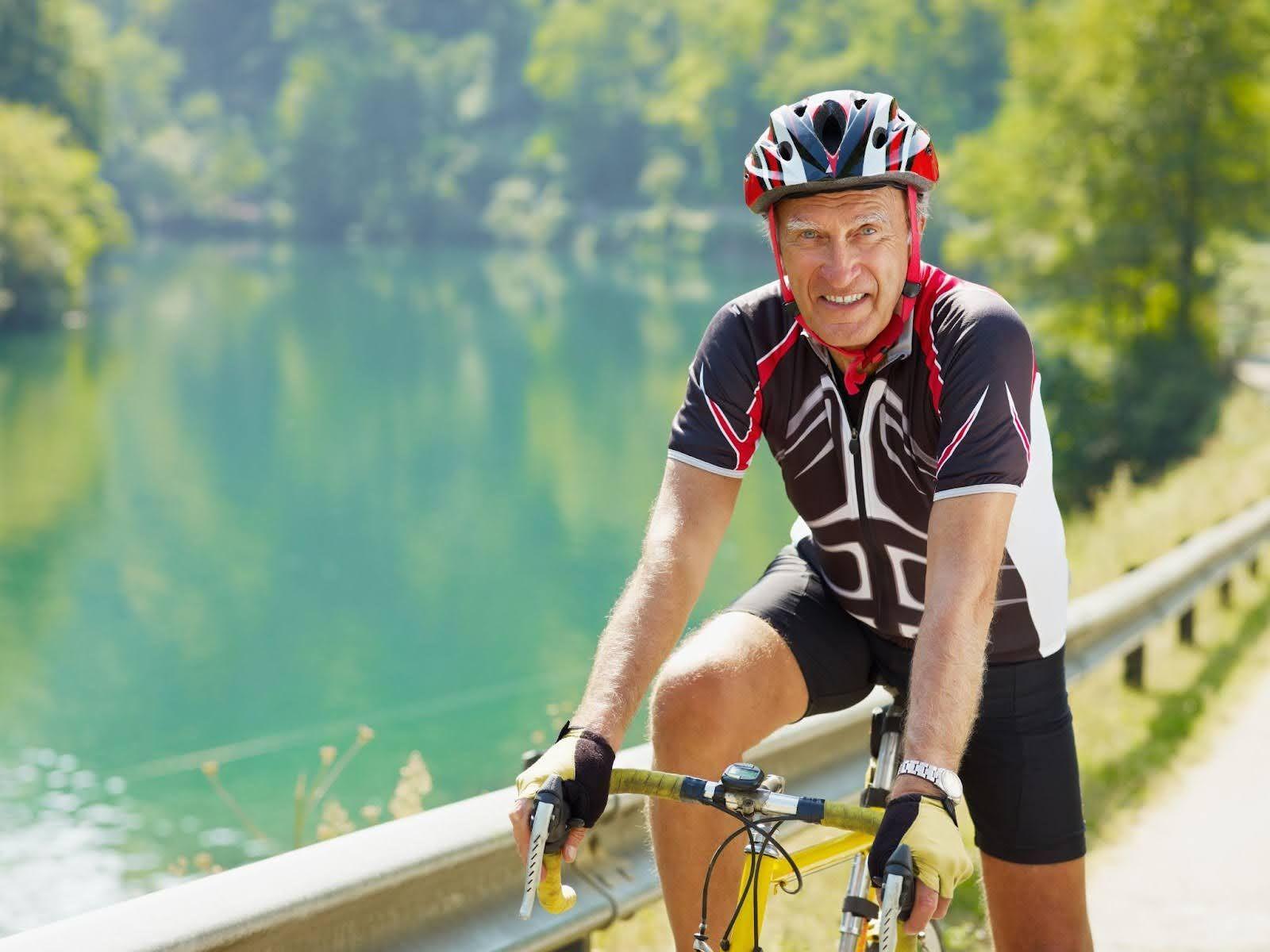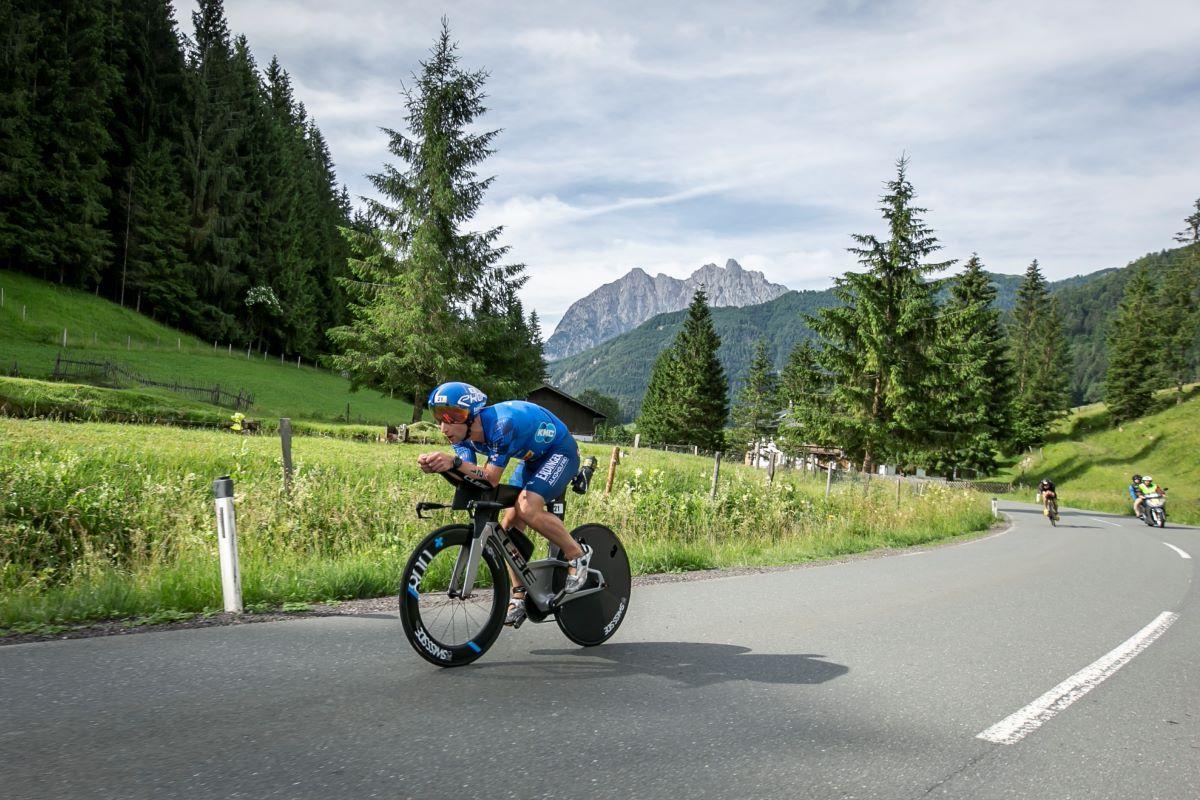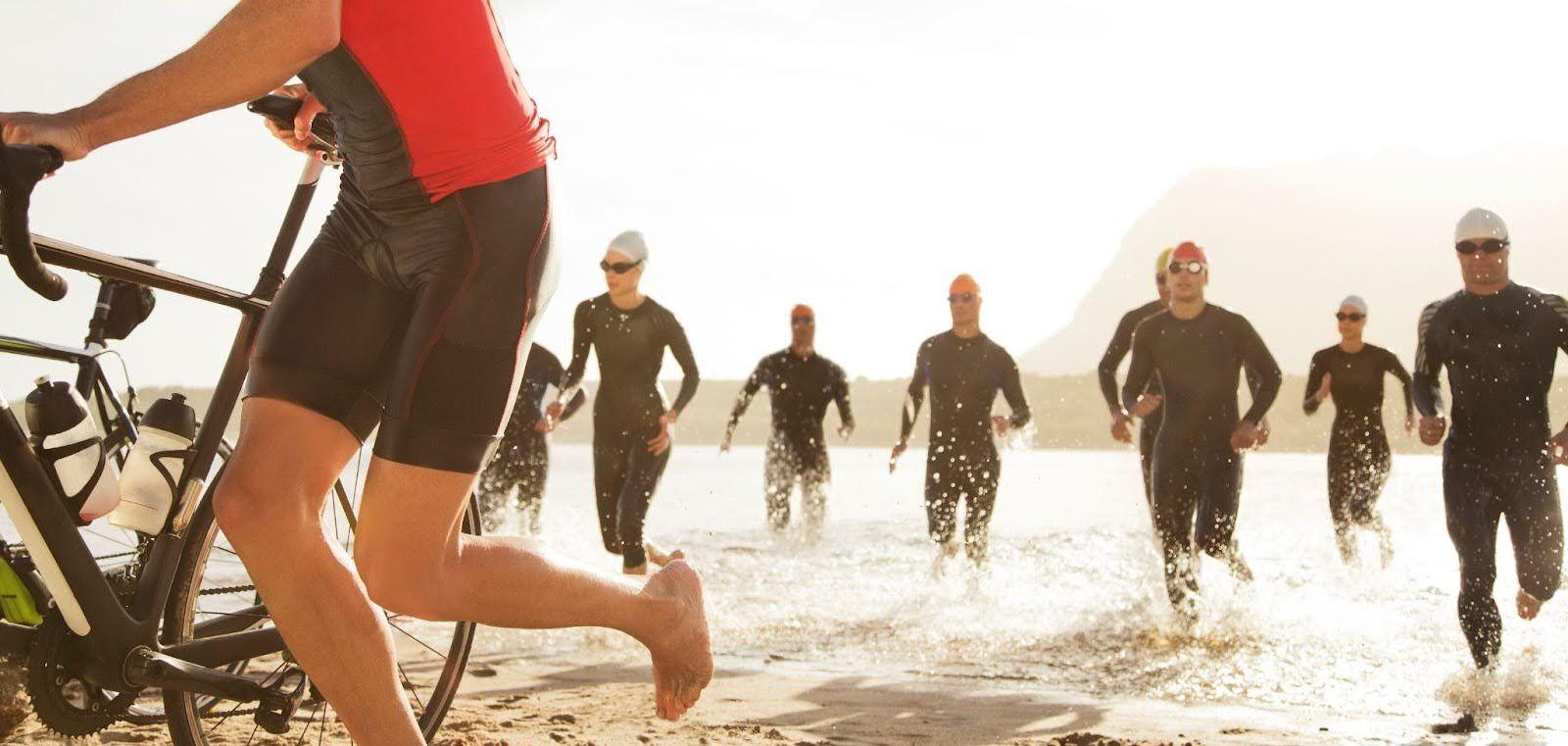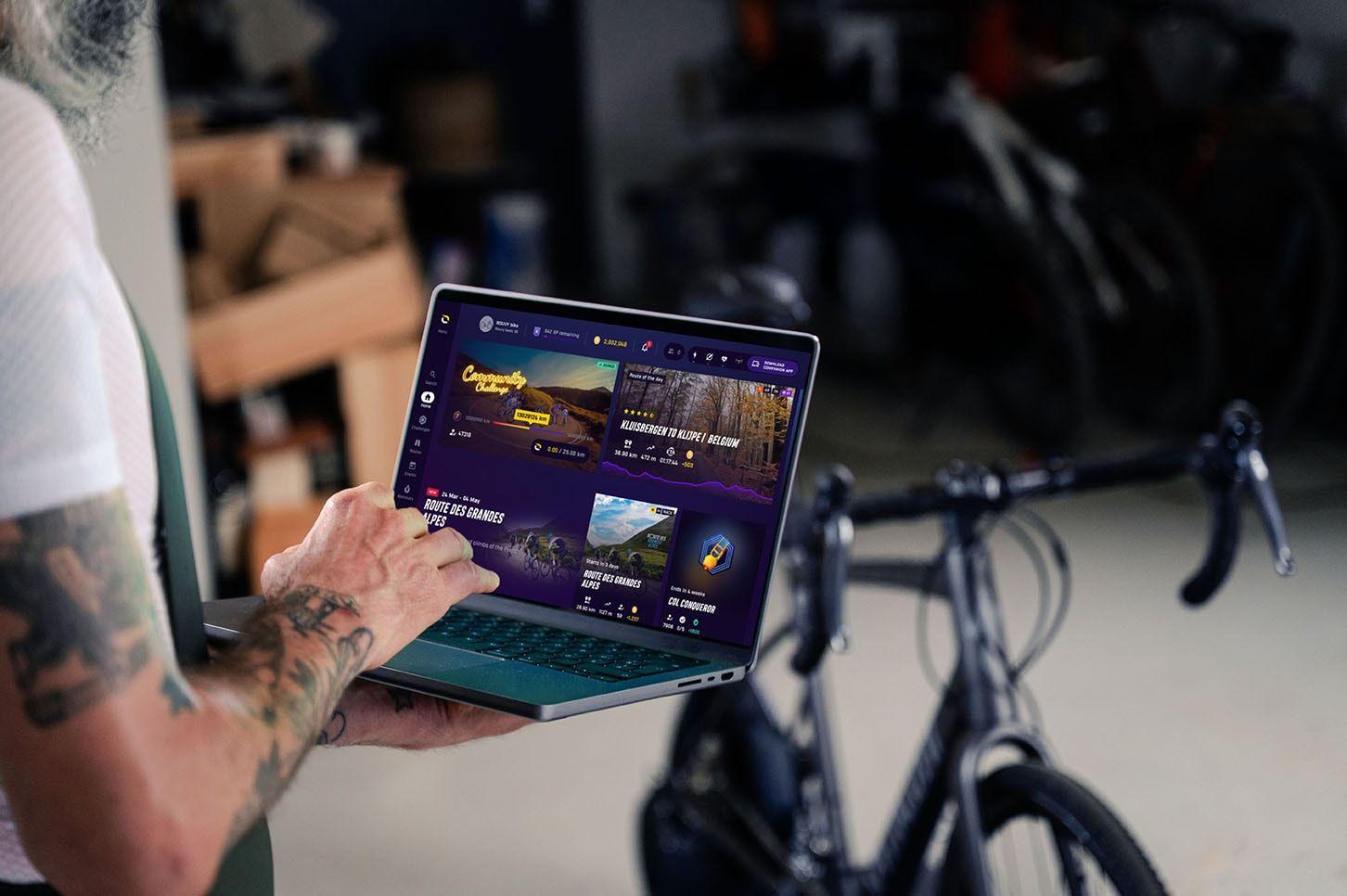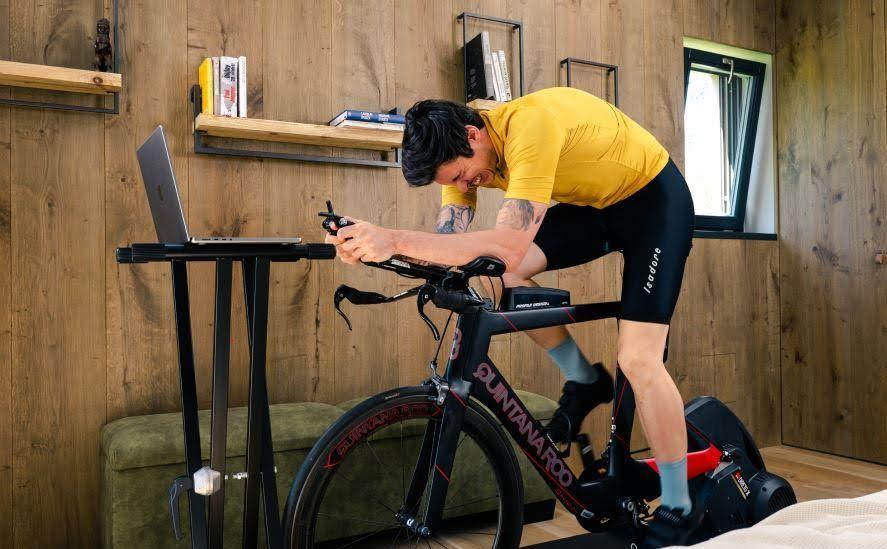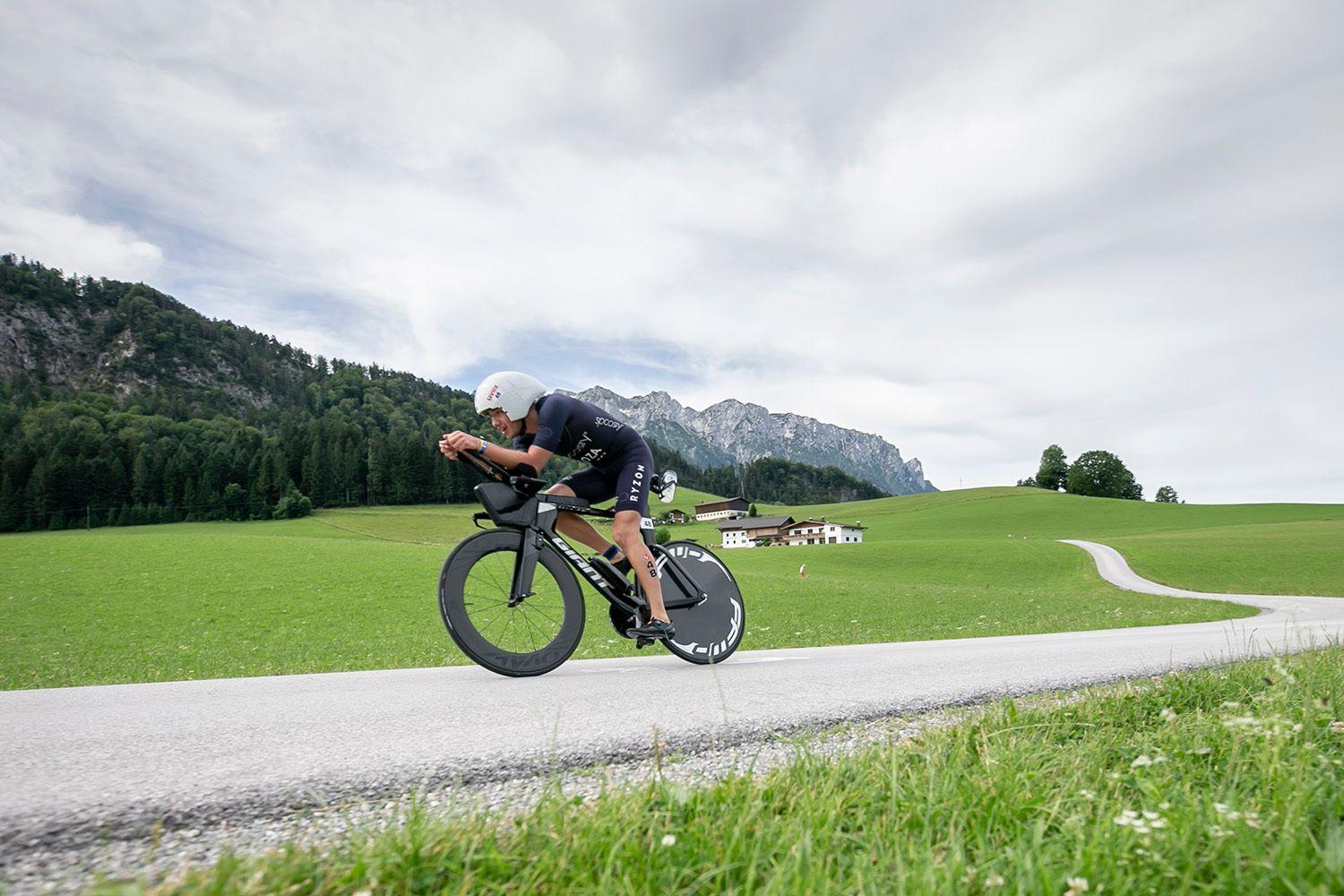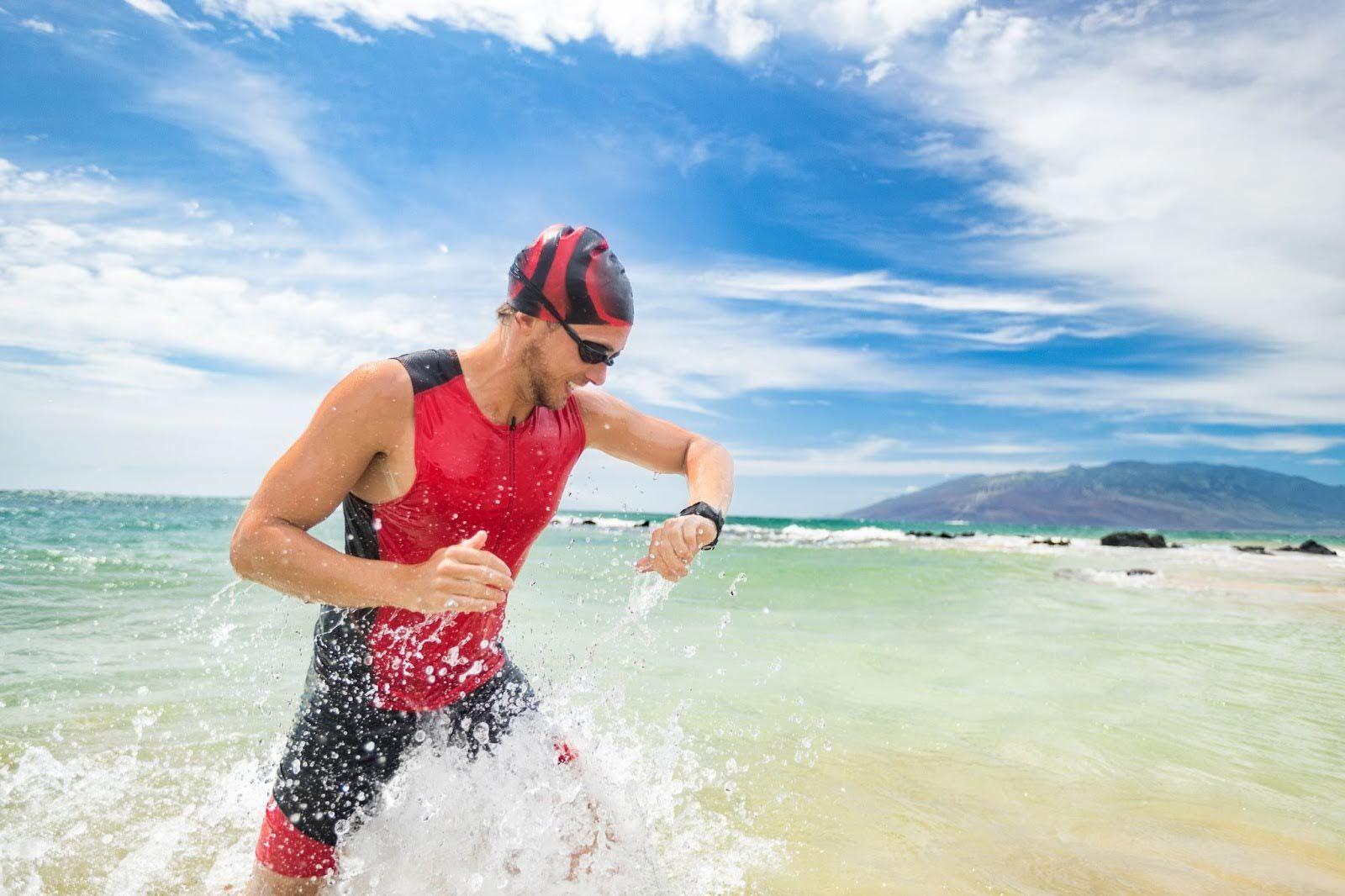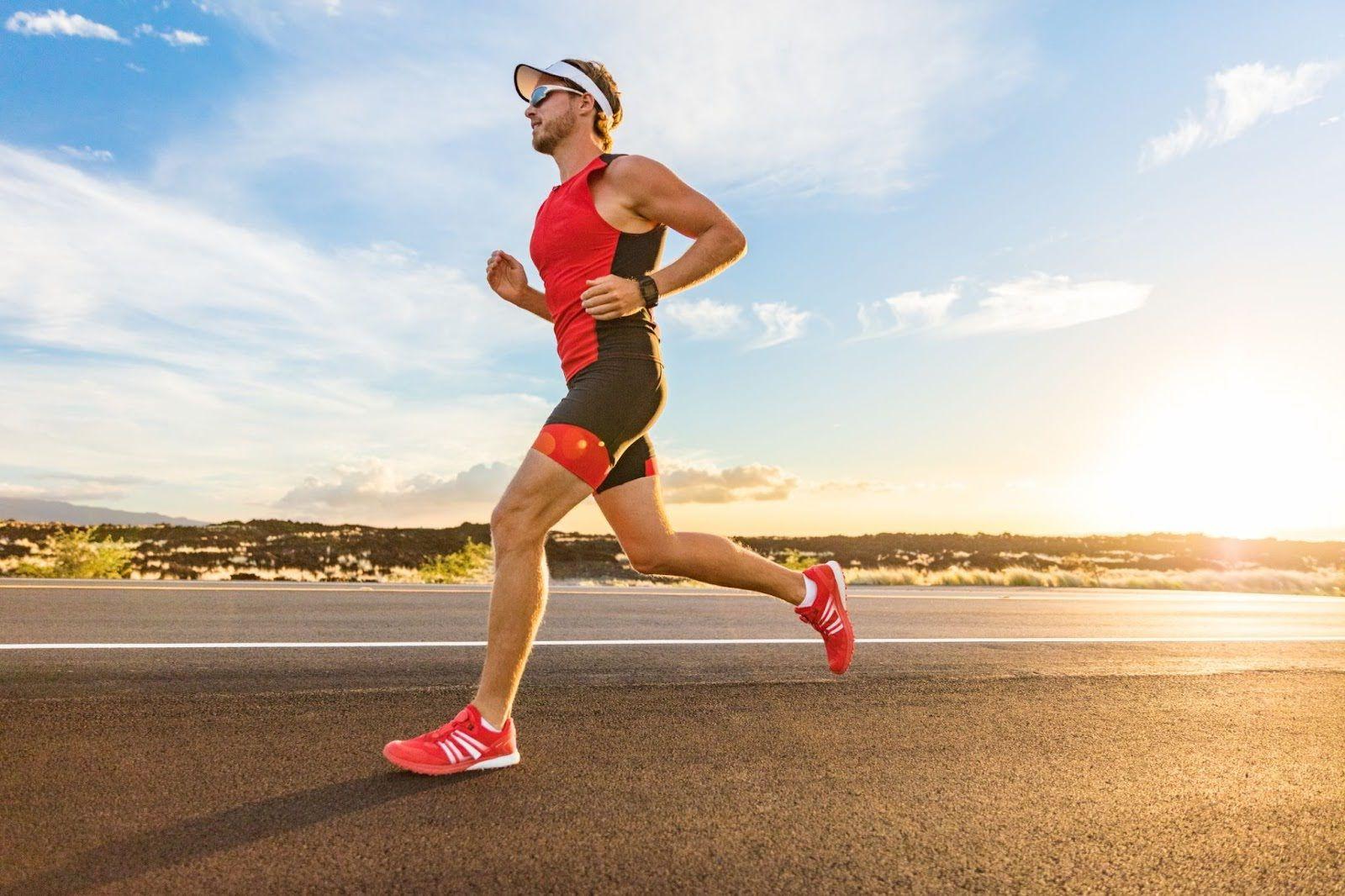The challenge and appeal of long-distance triathlon
An IRONMAN triathlon is one of the most demanding challenges in endurance sport, combining a 3.8 km swim, a 180 km bike ride, and a full marathon run of 42.2 km. For many participants, the excitement of pushing their limits and achieving both physical and mental milestones is incredibly rewarding. Preparing for an IRONMAN is no small task; it takes months of dedicated work, commitment, and discipline, which can feel very overwhelming at times. But when you cross that finish line, the feeling of achievement is sweet!
People say the journey is transformative. It teaches you resilience, discipline and mental toughness in ways you never expected. Unlike shorter races, where you can get away with less preparation, an IRONMAN requires a complete lifestyle change. It’s about committing to your training, recovery and nutrition until they become part of your daily routine.
What makes IRONMAN unique compared to sprint or Olympic distances
What makes this event unique compared to sprint or Olympic distances is its focus on endurance over speed. Sprint and Olympic triathlons are excellent ways to get started in the sport, lasting anywhere from 1 to 3 hours. By contrast, IRONMAN events typically last between 10 and 17 hours, making pacing, nutrition, and mental strategy as important as physical conditioning.
The race itself is a few events rolled into one; you need to shift your mindset and energy levels across the different stages of the event. This combination of physical endurance and mental management is what makes IRONMAN so unique in the triathlon world and why it appeals to those seeking the ultimate test.
“Your body drives you to the finish line, but your mind makes you cross it” - Sebastian Kienle.
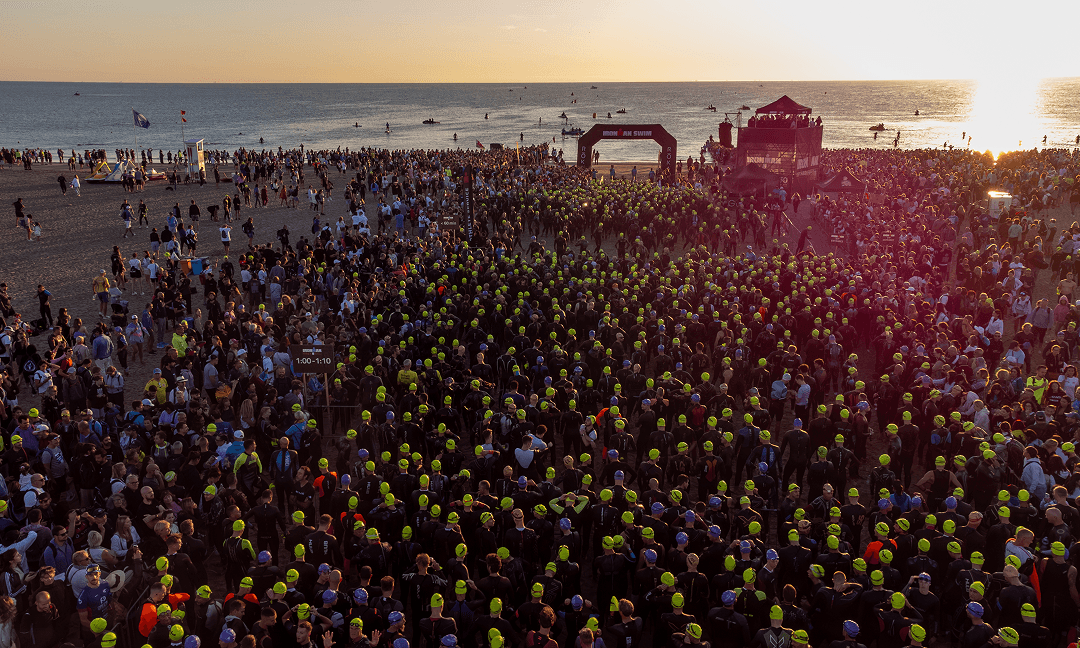
Setting realistic goals for your first IRONMAN
Completion over competition
When you’re doing your first IRONMAN, it’s important to balance ambition with reality. Some may be tempted to compare themselves to seasoned triathletes, but most first-time triathletes will benefit from focusing on simply completing the race. This perspective helps to take the pressure off of chasing a certain time and instead focuses on the preparation.
Completing an IRONMAN is already an achievement, and building confidence through small training milestones can improve and sustain one’s motivation. Viewing the race as a personal challenge rather than a competition against others makes the event less pressurising, far more rewarding and far less stressful.
And, it’s not just about the destination, but the journey itself!
Time expectations and finish-line focus
The time required will vary depending on your background and strengths. If you’re a runner or cyclist, you may be stronger in one discipline but less experienced in the other, so you’ll have uneven splits on the day. **A more realistic approach is to consider the average and realistic finishing times for first-timers, which are 12-16 hours. ** Cut-off times are generous, allowing up to 17 hours for completion, which means that consistent pacing and smart management are more important than raw speed. Keeping the finish line as the main goal helps one maintain perspective during the tough moments in training and racing.
Mark Allan famously quoted, "You can keep going and your legs might hurt for a week, or you can quit and your mind will hurt for a lifetime".
If a full IRONMAN feels a step too far right now, explore our Half IRONMAN training guide to start your journey.
IRONMAN training basics
Training phases explained
IRONMAN triathlon preparation typically follows a structured training block that gradually builds fitness:
The base phase focuses on developing aerobic endurance with steady sessions in swimming, cycling, and running.
The build phase increases intensity by adding tempo workouts, intervals, and longer race-specific sessions.
The peak phase simulates race conditions by combining long workouts with nutrition practice, teaching the body how to handle sustained effort.
Finally, the taper phase reduces training load while maintaining intensity, making certain the body is fresh and rested in time to peak for race day.
Sticking carefully to these phases offers a structured approach to reaching the starting line, minimising the risk of burnout or injury. It’s also important to always listen to your body, no matter what needs to be accomplished in your IRONMAN training plan.
Weekly structure and training volume
A typical training week for a first IRONMAN involves:
two to three swims,
three to four bike sessions,
and three to four runs,
supported by strength and mobility work.
Long rides and runs form the backbone of endurance, while shorter, more intense sessions improve efficiency and speed. For beginners, training usually requires between 10 and 15 hours per week, though experienced athletes may train more.
Balancing training with work, family, and recovery is challenging, but it is necessary for consistency. Missing one session won’t derail your progress, but being consistent with your weekly habits will yield the best results.
Consistency is key!
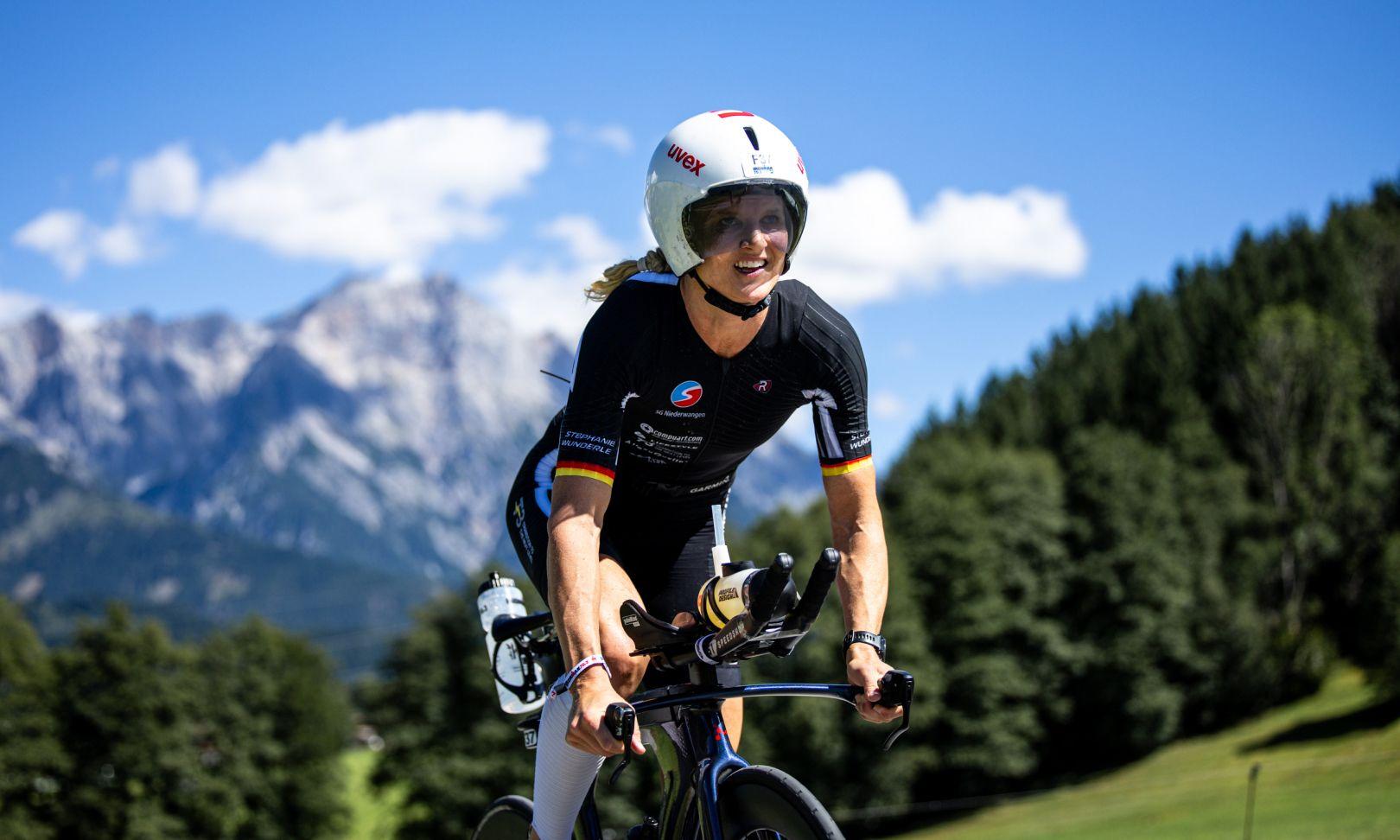
Cycling preparation with ROUVY
The role of the bike leg in IRONMAN
The cycling leg is the ‘meat’ and longest section of an IRONMAN, often taking half the total race time. Preparing effectively for this segment is essential, as a badly executed bike leg can leave you too fatigued for the marathon.
Long rides develop endurance, while interval sessions build power and efficiency. Since bike fitness significantly influences overall performance, many coaches recommend allocating more training time to cycling than to swimming or running. A confident, steady bike ride also helps preserve energy for the marathon, which is where many first-timers struggle.
Indoor cycling and structured training with ROUVY
Indoor training tools, such as ROUVY, provide a significant advantage for preparation. With ROUVY, you can simulate real-world race routes and practise on climbs, flat profiles, or rolling hills. This type of training preparation enables you to refine your pacing, test nutrition strategies, and ride in a controlled environment, regardless of the weather conditions, while focusing on your goal.
Structured workouts available on the platform target specific goals such as building FTP, improving climbing strength, or practising sustained efforts. Structured workouts or IRONMAN training plans make it easier to integrate cycling into your first triathlon training plan without the logistical challenges of outdoor long rides. Over time, this consistency develops bike strength that becomes your key to your IRONMAN performance.
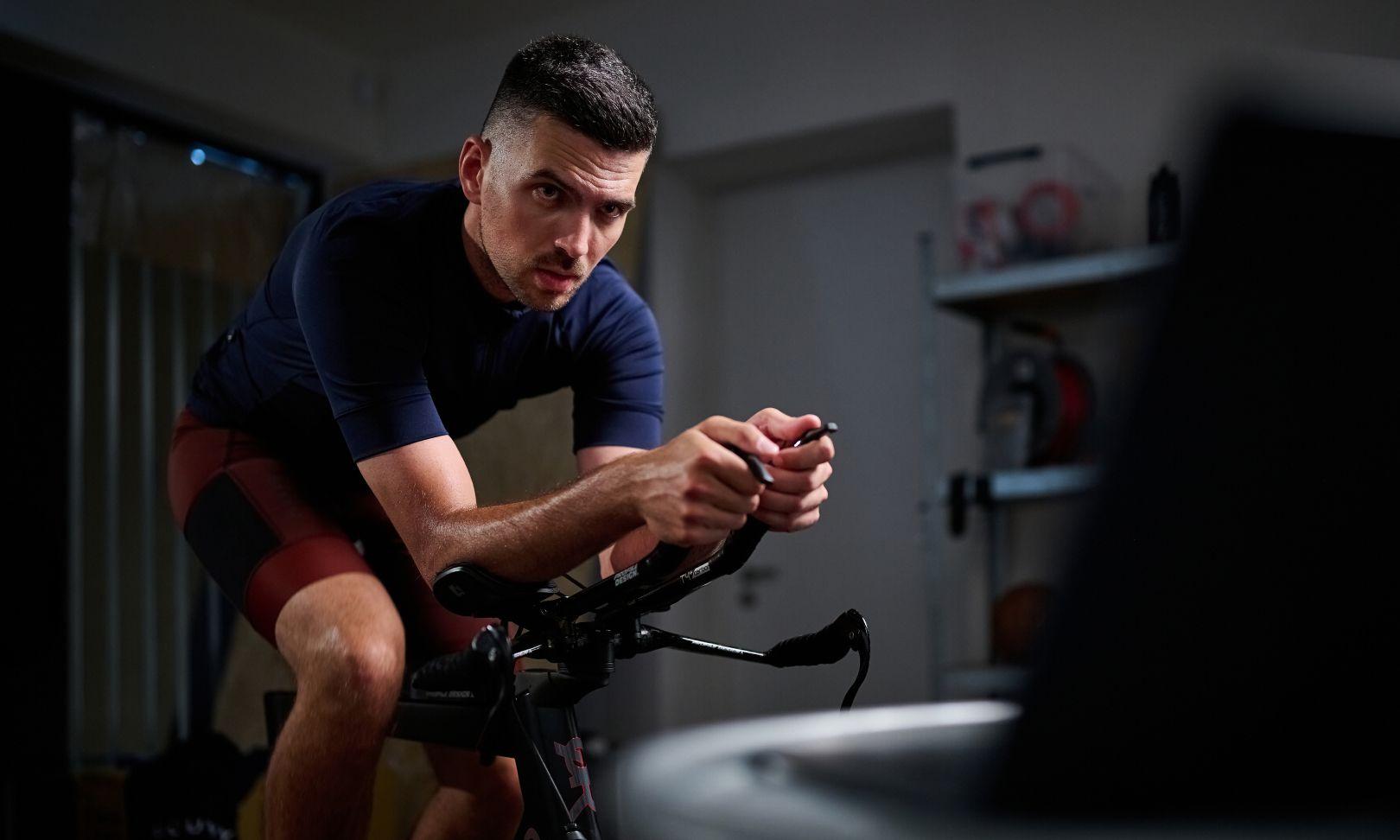
Swim training essentials
Building endurance and open-water confidence
The swim can feel intimidating for many first-time triathletes, especially if most of their training has taken place in a pool. Building endurance is vital, but so is developing confidence in open water. Training should gradually introduce longer continuous swims, sighting drills to practise looking ahead, and sessions with other swimmers to mimic the frenzy of race conditions.
Becoming comfortable with wetsuits, colder temperatures, and choppier water makes the transition to race day much smoother. Regular open-water sessions in the weeks leading up to the race help reduce anxiety and build familiarity with conditions.
Common beginner swim mistakes
Starting too fast in the swim, which leads to early fatigue and stress. The best strategy is to begin at a controlled pace, focusing on technique and efficiency rather than speed.
Neglecting bilateral breathing, which is particularly useful in open water, where waves or other swimmers can limit visibility and symmetry if breathing is one-sided. Bilateral breathing involves taking breaths on alternating sides during a swim, usually every three strokes in freestyle swimming. This technique enables one to maintain balance and symmetry in their strokes, enhancing overall performance and reducing strain on one side of the body.
Skipping open-water practice is also a pitfall, as the change from a pool environment can be a shock on race day. Correcting these mistakes during training ensures the swim becomes a manageable start rather than a source of anxiety.
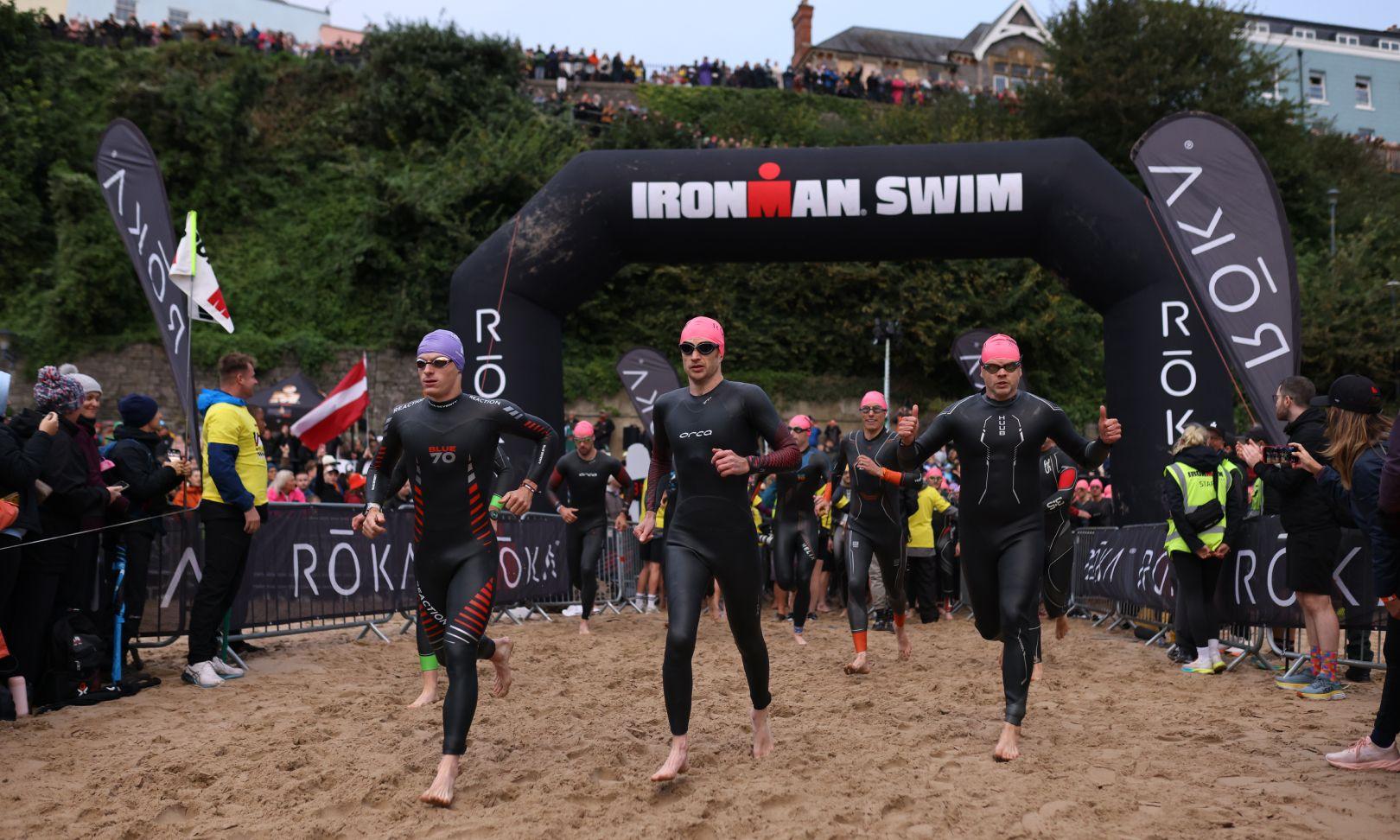
Running preparation
The importance of long runs and brick sessions
Running a marathon after a long swim and bike ride requires specific preparation that goes beyond traditional run training. Long runs build the aerobic base necessary for endurance, while brick sessions, which combine cycling and running, are crucial for adapting to the heavy-legged sensation that often follows cycling.
These workouts train both the body and mind to transition smoothly, which can be one of the most challenging aspects of the race. Gradual progression in distance ensures durability, and practising race-day pacing during long runs helps prevent burnout during the marathon.
Injury prevention in IRONMAN run training
Injury prevention is one of the most important aspects of running training, as the increased volume can place strain on joints and muscles.** A well-structured plan should include recovery runs, mobility drills, and careful increases in mileage**. Cross-training, such as aqua jogging or low-impact sessions, can also support running fitness while reducing impact stress.
Listening to early warning signs, such as persistent pain or tightness, is key to avoiding serious injuries. Consistent strength training that targets the hips, glutes, and core muscles also reduces the likelihood of overuse injuries.
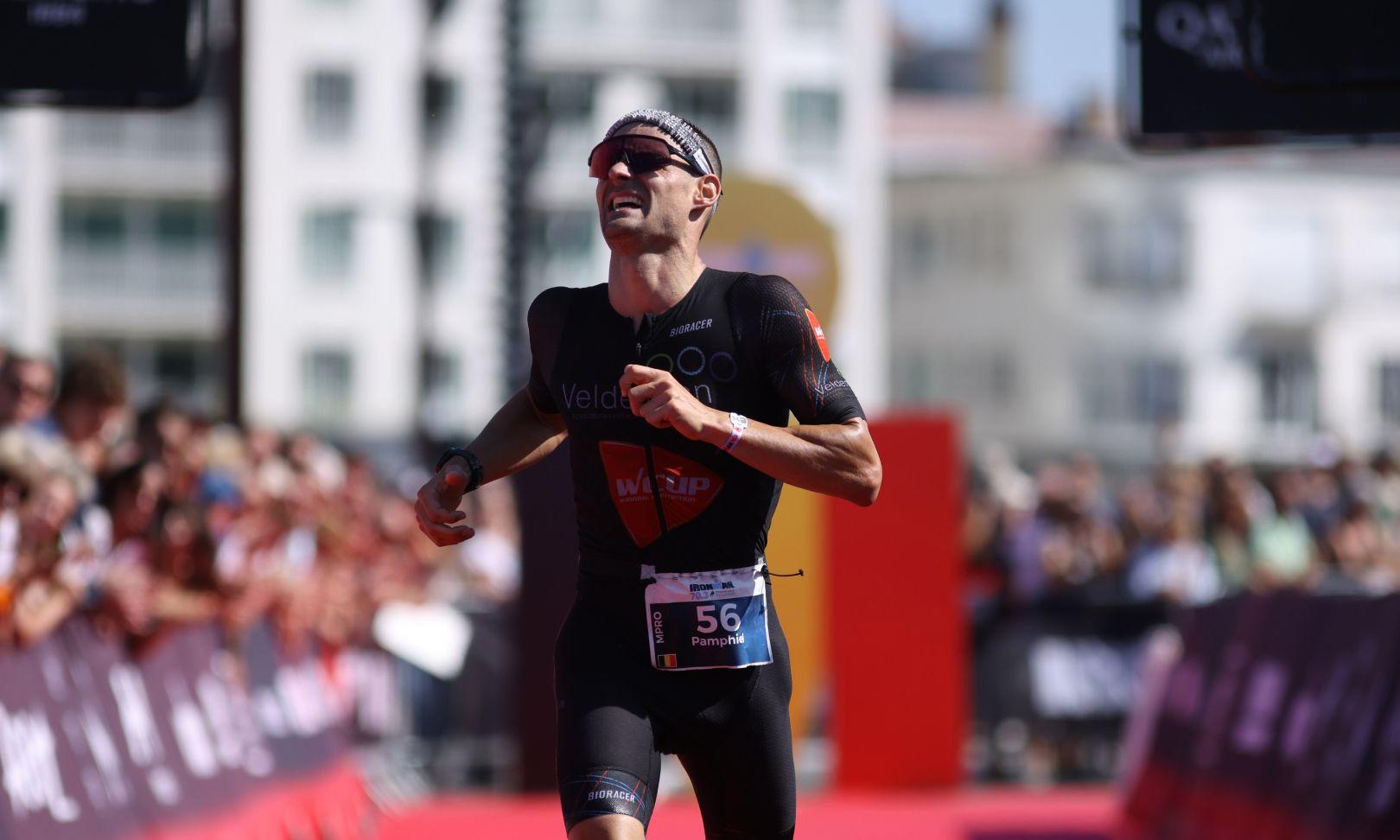
Strength & mobility work
Why strength and mobility matter
Strength and mobility training should not be ignored in an IRONMAN training plan. A stable core improves posture and efficiency across all three disciplines, while mobility ensures that muscles and joints can move freely under load. A combination of strength and core work helps maintain form when fatigue sets in, which is crucial during the later stages of the marathon.
Strength training also makes you more resilient, reducing the risk of injuries from repetitive motion and imbalances.
How to include gym work in your training
Two to three short gym sessions a week can provide significant benefits without adding excessive training stress. Key exercises include squats, lunges, deadlifts, and planks, which focus on functional strength that directly supports movements such as swimming, biking, and running. Single-leg work improves balance and stability, while mobility drills, such as yoga or dynamic stretching, enhance range of motion.
Sessions should be progressive but not excessive, supporting endurance training rather than replacing it. Consistency makes the body more durable and better prepared for IRONMAN racing.
Nutrition for training and race day
Daily nutrition for endurance athletes
Endurance training requires consistent fuelling, both in daily nutrition and during sessions. A balanced diet rich in carbs provides energy for training, and protein supports muscle repair and recovery. Healthy fats, vitamins and minerals round out the diet for long-term health and performance.
Eating enough calories to match your training demands is crucial; under-fueling can lead to fatigue, poor recovery, and even illness. Hydration should be prioritised throughout the day, not just during workouts.
Race-day fueling strategies
During long sessions and the race itself, fuelling strategies become more specific. Most athletes consume between 200 and 300 calories per hour while biking and running, using a combination of sports drinks, gels, and solid food. Electrolyte replacement is also key, especially in hot weather where sweat losses are high.
Practising these strategies in training ensures your body can digest and absorb fuel efficiently on race day. Avoid new or untested products on race day to prevent gastrointestinal issues that can compromise your performance and ruin your day.
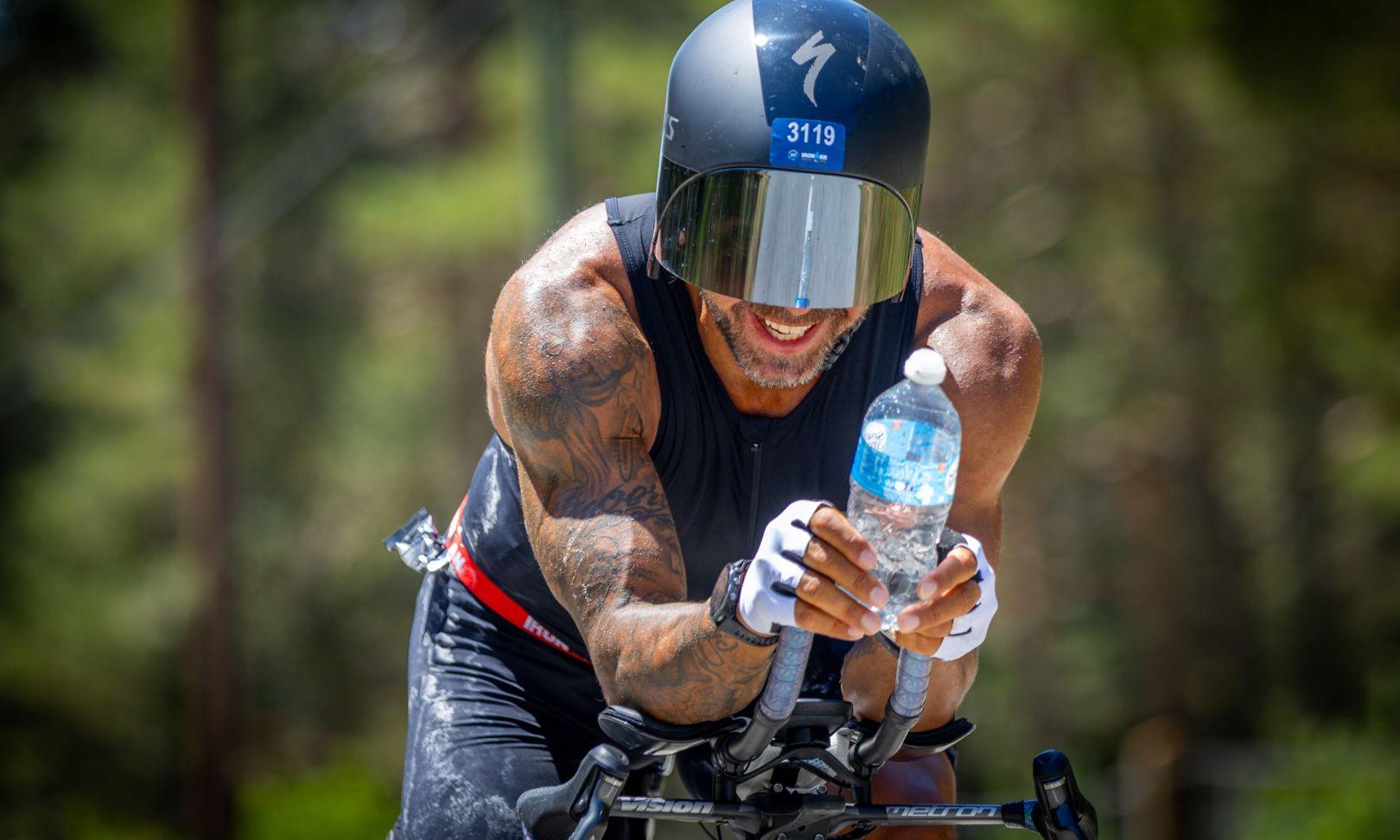
Gear checklist for your first triathlon
Essential triathlon gear
Having the right gear makes training and racing more efficient and comfortable. For cycling, a reliable road or triathlon bike with proper fit is crucial. Comfort is more important than expensive components. An indoor trainer paired with ROUVY provides a controlled environment for consistent cycling training.
A triathlon wetsuit improves buoyancy and warmth in open-water swimming; a tri suit means you don’t have to change clothes across disciplines.
Transition and race-day equipment
Running shoes should be well-fitted and tested in training to prevent blisters and discomfort during the run. Race day gadgets, such as a GPS watch, heart rate monitor, or power meter, will provide you with feedback to help you pace and adjust your effort.
Transition areas should be set up with elastic laces, nutrition and sun protection ready to grab quickly. Having a checklist and practising transitions in training will help you avoid last-minute stress on race day.
Race-day strategy & mental preparation
Pacing and energy management
An IRONMAN triathlon is as much mental as physical. The key to race day success is pacing, as going too hard in any discipline can catch up to you later. Swim and bike conservatively to save energy for the run.
Monitor your heart rate, power, or perceived exertion to maintain consistent pacing. Break the race into smaller chunks or goals, like the next aid station, and the distance will feel more manageable.
Mental strategies and avoiding rookie mistakes
Managing nerves is part of the challenge, and having a pre-race routine can help you feel more in control. Avoid rookie mistakes, such as not eating enough, pushing too hard too soon, or ignoring hydration, and you’ll avoid problems later.
Visualisation, positive self-talk, and focusing on the process, not the outcome, will help you get through tough moments. Treat the race as a series of small steps, not one big one, and you’ll stay confident and focused.
Mental strategies are key to getting through the tough bits at the end of the run, pushing through doubts and heat to the finish line. In endurance sport, it’s often the mind that limits us before our bodies do.
Reading triathlon literature can help you stay motivated; understanding what other athletes have gone through or learning training techniques can boost your motivation, confidence, visualisation and overall prep for your race or journey. Books give you valuable insight into what contributes to a triathlete’s success, whether that’s tactics, strategies, mental toughness or nutrition advice. _An ‘if they can do it, so can I!’ attitude can come in handy! _
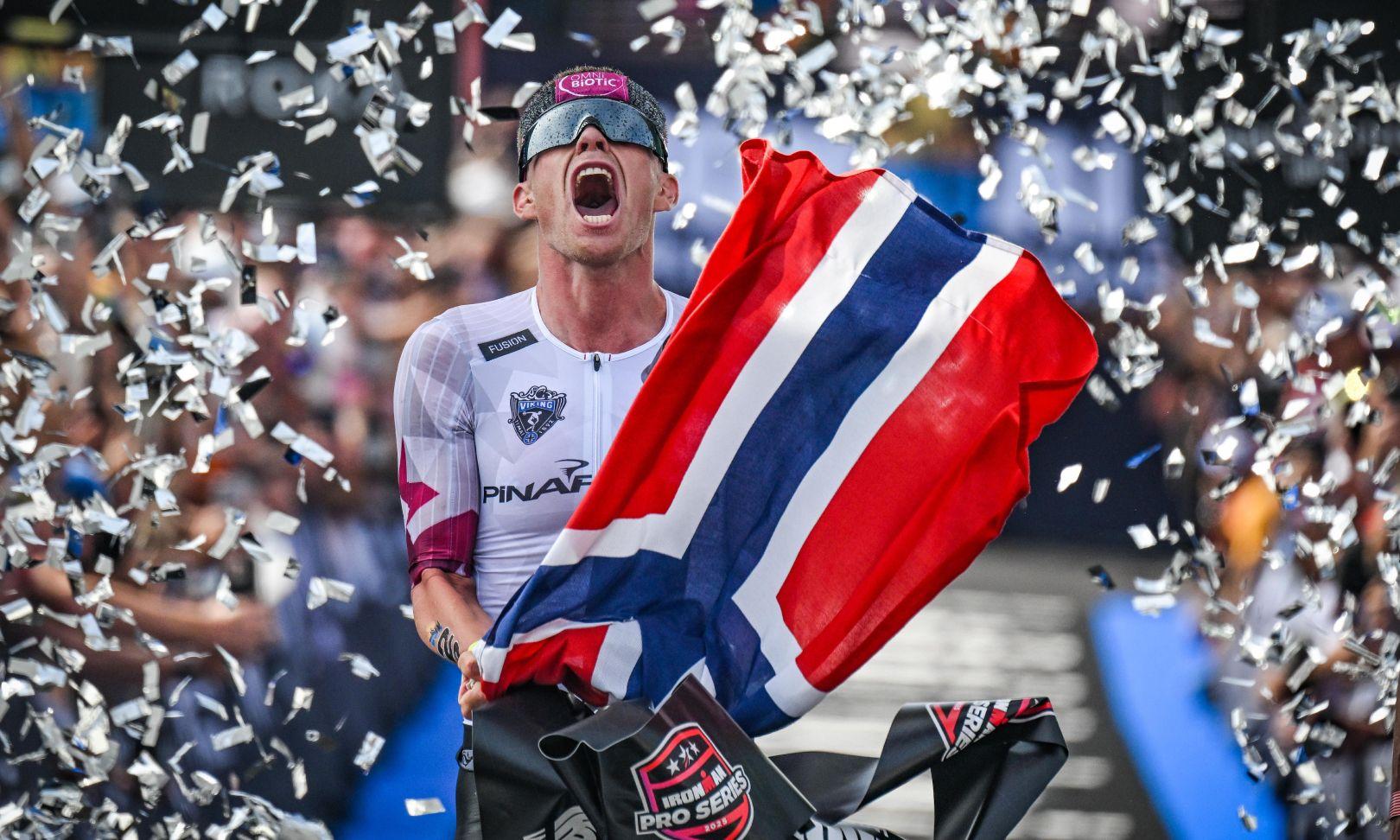
What to expect after the race
Recovery after IRONMAN
Crossing the finish line of your first IRONMAN is a life-changing experience, but effective recovery is just as important as preparation. Post-race fatigue can last for days or even weeks, and proper recovery involves rest, hydration, balanced nutrition, and gentle activity.
Active recovery, such as light swimming, cycling, or walking, helps circulation without adding stress. Sleep is one of the most powerful recovery tools, aiding both physical repair and mental restoration.
Post-race mindset and motivation
Many first-timers also experience the post-race blues, as the long-term goal is suddenly over. Setting new goals, whether another triathlon, a different endurance event, or a recovery-focused training block, helps maintain that motivation.
Reflecting on the journey, celebrating the achievement, and sharing the experience with others can also ease this transition. Completing an IRONMAN remains a milestone, and for many, it sparks a passion for continued involvement in endurance sports.
First IRONMAN Checklist: Key Takeaways
You’ve just read through the full guide and already know the main steps to get ready for race day. To make it easier, here’s a simple checklist that sums it all up.
✅ Set your goal: Focus on finishing, not racing the clock.
✅ Follow phases: Base → Build → Peak → Taper.
✅ Swim prep: Train in open water & practise sighting.
✅ Bike focus: Prioritize long rides and steady pacing.
✅ Run smart: Do brick sessions and practise marathon pacing.
✅ Strength & mobility: 2–3 short gym sessions weekly.
✅ Nutrition: Practise fueling & hydration during training.
✅ Mental strategy: Break the race into small goals and practise positive self-talk or read some triathlon quotes.
✅ Recovery: Plan post-race rest, hydration, sleep, and new goals.
